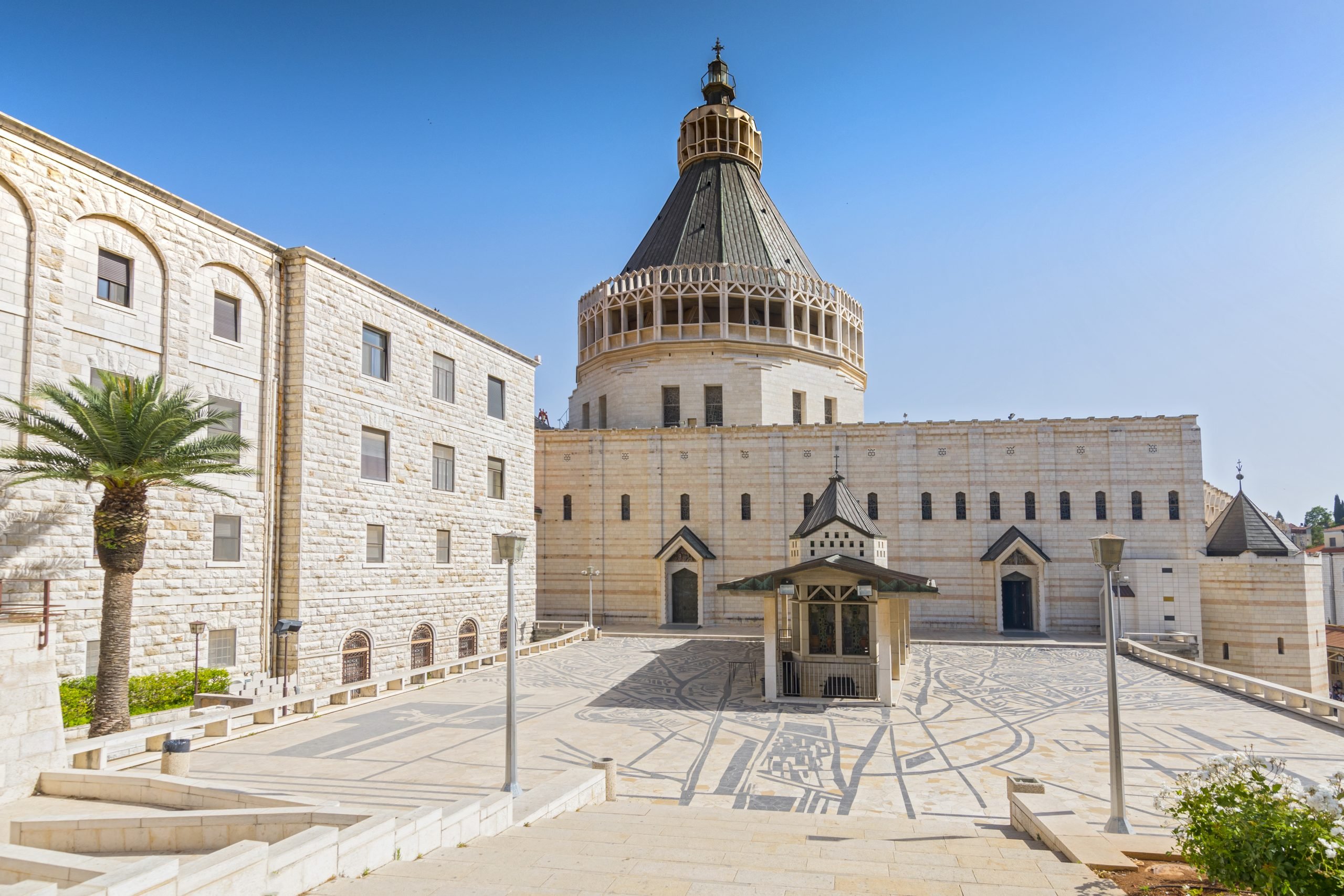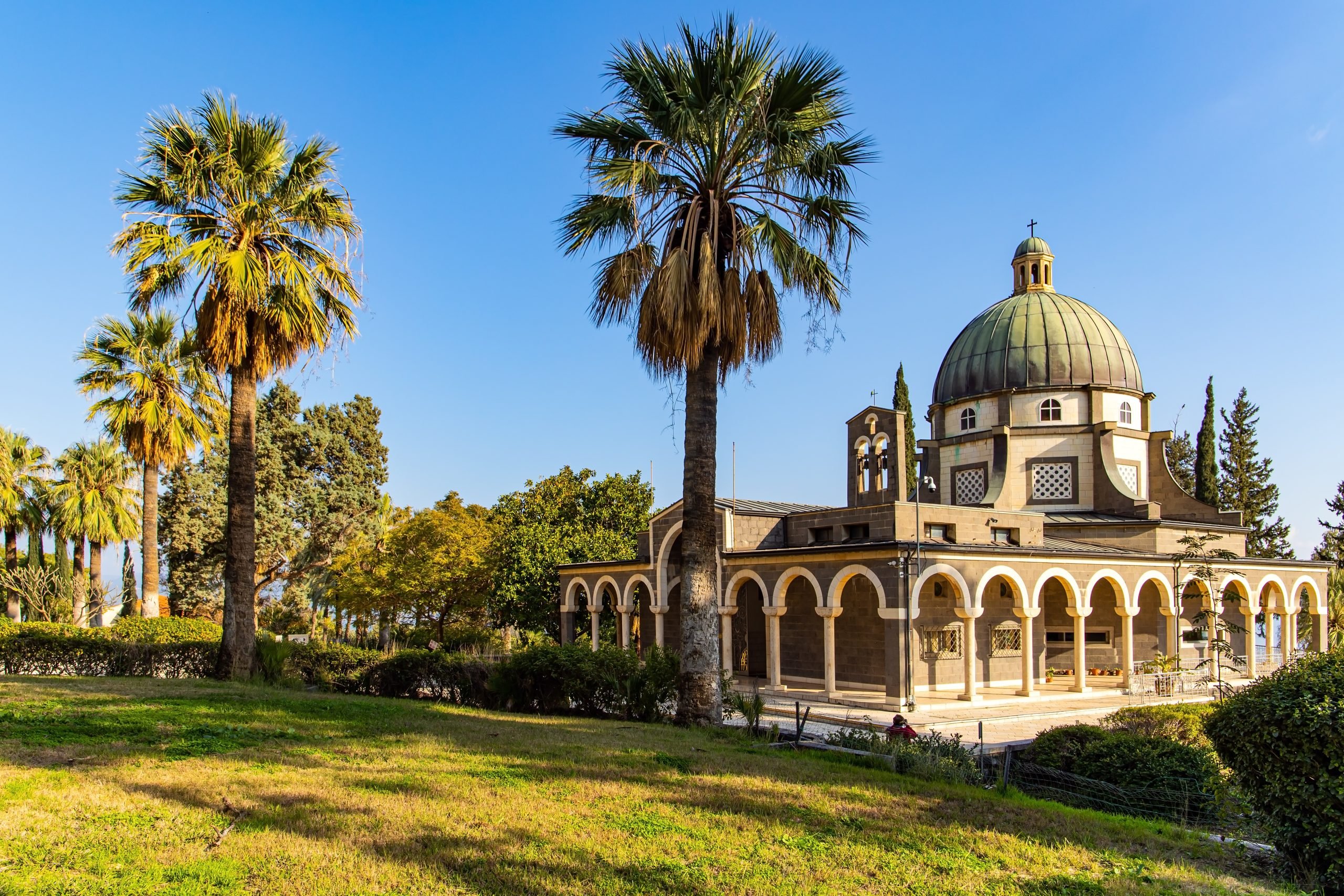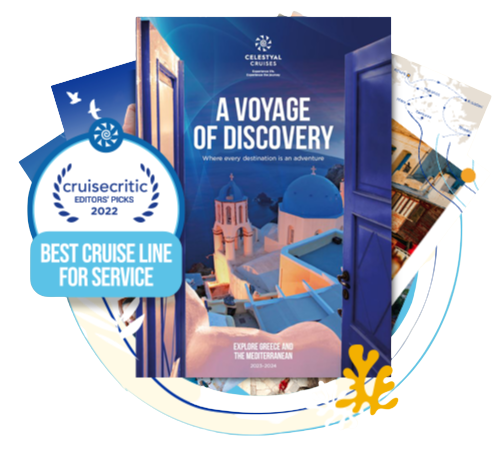Nazareth & Galilee
A pleasant drive will bring you from the port to the picturesque hills of Nazareth by highway.
Upon your arrival to Nazareth, you will Visit St. Gabriel Church and Mary’s Spring. The church, also known as St. Gabriel’s Greek Orthodox Church or the Greek Orthodox Church of the Annunciation, is located over an underground spring that according to Eastern Orthodox belief is where the Virgin Mary was drawing water at the time of the Annunciation.
Water from the spring still runs inside the apse of the church and also feeds the adjacent site of Mary’s well, located 140 m away. The spring was the village of Nazareth’s only water supply at the time the church was constructed and served as a local watering hole for some three thousand years.
The spring inside the church is located at the end of a low vaulted cavern built by the Crusaders in the 12th Century. Ancient Armenian tile work decorates the walls of the cavern and there is a small recess with a shaft leading down to the spring where one can lower a metal cup to draw water. Free time for shopping and souvenirs. Your second stop will be Jardenit, place of baptizing of the first Christians, where you will have a guided visit.
Lunch break in a typical restaurant. A panoramic drive through ancient Tiberias with its modern hotels and restaurants will bring you to Capernaum, a settlement on the shore of the Sea of Galilee. The site is a ruin today but was inhabited from 150 B.C. to about A.D. 750. Here where you will see the ancient synagogue and the House of St. Peter. Following site will be Tabgha, with the Church of the Multiplication of the Loaves and the Fishes.
You will visit the interior of the church with the mosaic of the fish and loaves laid next to a large rock, which has caused some New Testament scholars to speculate that the builders of the original church believed that Jesus stood on this rock when he blessed the fish and loaves just before the feeding of the crowd who had come to hear him.
The Mount of the Beatitudes will be your next stop with the Byzantine church which was erected near the current site in the 4th Century, and it was used until the 7th Century. Remains of a cistern and a monastery are still visible. The current Catholic Franciscan chapel was built in 1938. Return back to the vessel.


Available on these itineraries
 19 Nights
19 Nights
Related Amazing excursions
Jerusalem & Betlehem
Learn MoreClassic Cairo
Learn MoreAncient Ephesus and the Terrace Houses
Learn MoreHouse of Virgin Mary & Ancient Ephesus
Learn MoreClassical Athens and its Monuments
Learn MoreThe Acropolis & The New Acropolis Museum
Learn MoreAthens monuments and the Acropolis
Learn MoreAthens tour and the New Acropolis Museum
Learn MoreAncient Ephesus
Learn MoreHaifa City Tour
Learn MoreMasada/Dead Sea
Learn MoreNazareth & Galilee
Learn MoreHighlights of Alexandria
Learn MoreLandmarks of Alexandria
Learn MorePerge and Aspendos
Learn MoreAntalya City Tour
Learn MoreThe crystal clear waters of Elounda and Spinalonga
Learn MoreCretan Jeep Safari
Learn MoreRiver Trekking Tour
Learn MoreA Delectable Day in Crete
Learn MoreAncient Temple of Poseidon and Cape Sounion
Learn MoreIzmir City Tour
Learn MoreOff the beaten track – 4×4 Adventure
Learn MoreClassical Athens and its Monuments
Learn MoreThe Essence of Santorini
Learn MoreTransfer to Sahara Beach
Learn MoreTransfer to Perissa Beach
Learn MoreTransfer to Ammoudara Beach
Learn MoreTransfer to Paradise Beach
Learn MoreTransfer to Kalafatis Beach
Learn More
Mykonos Magic
Learn MoreTransfer to Tsambika beach
Learn MoreBeauty of butterflies and Ancient Kameiros
Learn MoreCapturing the true spirit of Chora
Learn MoreTransfer to Agriolivadi beach
Learn MoreSacred Delos & Rhenia Island
Learn MoreAdventure, spills and thrills at Adaland Water Park
Learn MoreGreek wine and holy water: Philippi and beyond
Learn MoreKavala up close: walk through the ages
Learn MoreNestos River and the colours of Xanthi
Learn MoreKnossos Palace & Cretan Landscapes
Learn More
Thessaloniki Food on foot
Learn More
Rich history of a famous Greek winery
Learn More
A taste of wine and tradition
Learn More
Music, myths and history
Learn More
Pelion Spoon Sweets
Learn More
Making pottery fit for the Gods
Learn More
A delicious taste of ‘liquid gold’
Learn More
Home cooking and hospitality in Mykonos
Learn More
The secrets of Pelion cuisine
Learn More
Hiking to the ultimate beauty of Oia
Learn More
A kayak adventure discovering pirate coves
Learn More
The beautiful art of mosaic making
Learn More
Trek to the heart and soul of Milos
Learn More
Milos food on foot
Learn More
Sea Kayaking and the mesmerising Milos coastline
Learn More
A Geological wonder 4×4 adventure
Learn More
Limassol Omodos – Oenoyi Winery
Learn More
Ancient Civilisations with an expert archaeologist
Learn More
Thrill of the ride Buggy Safari
Learn More
Whirling Dervishes & dinner
Learn More
Turkish Baklava Making
Learn More
Gents Anatolian well-being (Berber and Hammam)
Learn More
Painting on Water: Turkish Ebru Art
Learn More
Heraklion Food on foot
Learn More
 International (US$)
International (US$)  EU (€)
EU (€)  Argentina (US$)
Argentina (US$)  Australia (AU$)
Australia (AU$)  Балканите (€)
Балканите (€)  Brasil (US$)
Brasil (US$)  Κύπρος (€)
Κύπρος (€)  Deutschland (€)
Deutschland (€)  España (€)
España (€)  France (€)
France (€)  Ελλάδα (€)
Ελλάδα (€)  Turkey (€)
Turkey (€)

